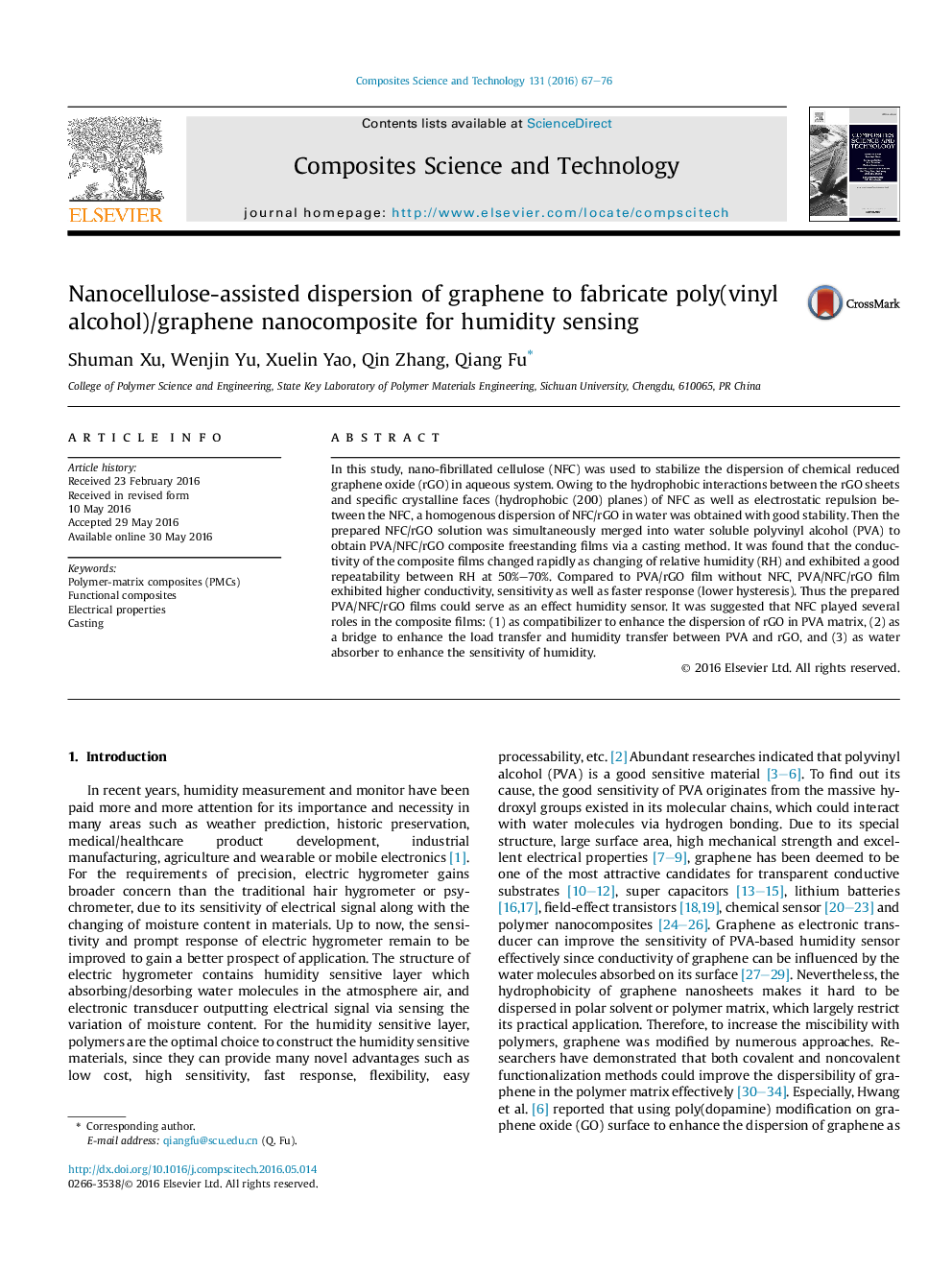| Article ID | Journal | Published Year | Pages | File Type |
|---|---|---|---|---|
| 819877 | Composites Science and Technology | 2016 | 10 Pages |
In this study, nano-fibrillated cellulose (NFC) was used to stabilize the dispersion of chemical reduced graphene oxide (rGO) in aqueous system. Owing to the hydrophobic interactions between the rGO sheets and specific crystalline faces (hydrophobic (200) planes) of NFC as well as electrostatic repulsion between the NFC, a homogenous dispersion of NFC/rGO in water was obtained with good stability. Then the prepared NFC/rGO solution was simultaneously merged into water soluble polyvinyl alcohol (PVA) to obtain PVA/NFC/rGO composite freestanding films via a casting method. It was found that the conductivity of the composite films changed rapidly as changing of relative humidity (RH) and exhibited a good repeatability between RH at 50%–70%. Compared to PVA/rGO film without NFC, PVA/NFC/rGO film exhibited higher conductivity, sensitivity as well as faster response (lower hysteresis). Thus the prepared PVA/NFC/rGO films could serve as an effect humidity sensor. It was suggested that NFC played several roles in the composite films: (1) as compatibilizer to enhance the dispersion of rGO in PVA matrix, (2) as a bridge to enhance the load transfer and humidity transfer between PVA and rGO, and (3) as water absorber to enhance the sensitivity of humidity.
